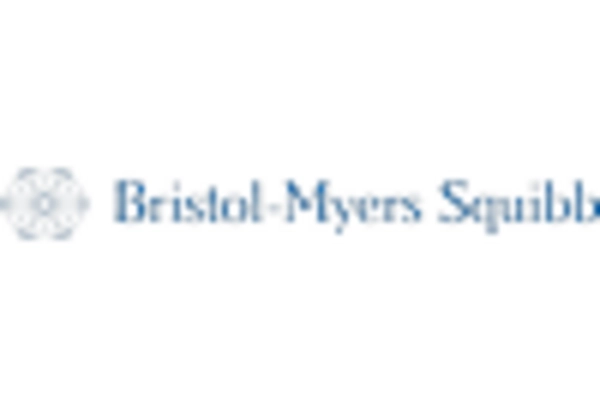Emergence of Personalized Medicine
The emergence of personalized medicine is reshaping the thrombus treatment market by tailoring therapies to individual patient profiles. Advances in genetic testing and biomarker identification are enabling healthcare providers to customize anticoagulant therapies based on a patient's specific risk factors and genetic predispositions. This approach not only enhances treatment efficacy but also minimizes the risk of adverse effects associated with standard therapies. As personalized medicine gains traction, the thrombus treatment market is likely to expand, with an increasing number of patients benefiting from targeted treatment strategies. The UK healthcare system is gradually integrating personalized approaches into clinical practice, which may lead to improved patient outcomes and a more dynamic market landscape.
Government Initiatives and Funding
Government initiatives and funding aimed at improving cardiovascular health are playing a pivotal role in the thrombus treatment market. The UK government has launched various programs to enhance awareness and treatment of thromboembolic disorders, which include funding for research and development of new therapies. For instance, the National Health Service (NHS) has allocated substantial resources to improve treatment protocols and patient education regarding thrombus-related conditions. This financial support is likely to foster innovation within the thrombus treatment market, encouraging pharmaceutical companies and medical device manufacturers to invest in new solutions. As a result, the market may experience accelerated growth driven by enhanced treatment options and increased accessibility for patients.
Advancements in Diagnostic Technologies
Advancements in diagnostic technologies are significantly influencing the thrombus treatment market. Enhanced imaging techniques, such as ultrasound and CT angiography, allow for quicker and more accurate diagnosis of thromboembolic events. These innovations facilitate timely treatment interventions, which are crucial for patient outcomes. The integration of artificial intelligence in diagnostic processes is also emerging, potentially improving the accuracy of thrombus detection. As diagnostic capabilities improve, healthcare providers are better equipped to identify patients who require thrombus treatment, thereby driving market growth. The UK healthcare system is increasingly adopting these advanced technologies, which may lead to a more proactive approach in managing thromboembolic disorders, ultimately benefiting the thrombus treatment market.
Rising Awareness of Thromboembolic Risks
Rising awareness of thromboembolic risks among healthcare professionals and the general public is contributing to the growth of the thrombus treatment market. Educational campaigns and initiatives aimed at highlighting the dangers of thromboembolic disorders have led to increased vigilance in both diagnosis and treatment. Healthcare providers are now more attuned to the signs and symptoms of conditions like DVT and PE, which may lead to earlier interventions. This heightened awareness is likely to result in a greater demand for thrombus treatment options, as patients seek timely and effective therapies. Furthermore, as public knowledge expands, the thrombus treatment market may see a shift towards preventive measures, thereby broadening the scope of treatment strategies available.
Increasing Incidence of Thromboembolic Disorders
The rising incidence of thromboembolic disorders in the UK is a primary driver for the thrombus treatment market. Conditions such as deep vein thrombosis (DVT) and pulmonary embolism (PE) are becoming more prevalent, largely due to an aging population and lifestyle factors. According to recent health statistics, the incidence of DVT has increased by approximately 30% over the past decade. This trend necessitates the development and availability of effective treatment options, thereby propelling the thrombus treatment market forward. Healthcare providers are increasingly focusing on early diagnosis and intervention strategies, which further stimulates demand for innovative therapies and devices. As the population ages, the burden of thromboembolic diseases is expected to escalate, indicating a sustained growth trajectory for the thrombus treatment market in the coming years.

















Leave a Comment